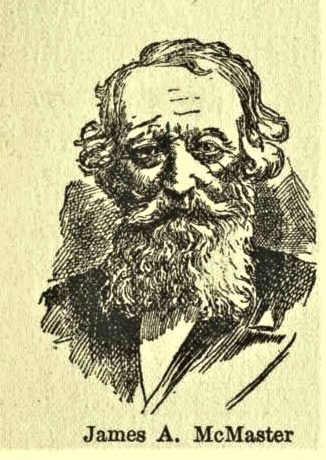Liam Ó Míodhacháin and Conradh na Gaelige in Dungarvan
By Kyle Beresford
In 2022 an
illuminated address was donated to Waterford County Museum. It was created in
1914 and was presented to Liam Ó hÍceadha/William
Cornelius Hickey (1885-1935), the secretary of Conradh na Gaelige in Dungarvan
to mark his forthcoming marriage. Liam worked as a Customs and Excise officer.
His wife was Katherine Power of Corballybeg Co Waterford. She worked as a baker
and confectioner in Dungarvan.
The work is
over one hundred years old and is a fine example of Celtic Revival artwork. The
colours are remarkably well preserved. These illuminated addresses were popular
in the 19th and early 20th centuries to mark events such as retirement, coming
of age, weddings, and so on. One of the finest creators of these addresses were
John and Florence Gilbert of Cork. Michael Beary the Borough Surveyor in
Dungarvan also painted addresses. A fine example of his work is on display at
Waterford County Museum, presented to Captain John Veale.
This address
is richly decorated with a border of elaborate Celtic Revival motifs, and
vignettes featuring the Dungarvan coat of arms, the old gable wall at St Mary’s
Church of Ireland, and the ruins of McGrath’s Castle, Abbeyside. The latter was
probably included as that is where Hickey lived. It also features fantastic beasts
similar to those seen in early Irish illuminated manuscripts. At the top of the
address a real photograph of O’Hickey has been pasted on. The following is the
inscription translated to English:
Testimonial to Liam Ó hÍceadha.
We, Cuallacht Chosnamha na Gaeilge
(the Irish language defence committee) here in Dungarvan, wish to express
our respect and appreciation to you for all you have done amongst us to promote
the use of and respect for the Irish language and all that accompanies it; and
we consider no more timely opportunity to do so than now on the occasion of
your marriage. Our respect and esteem for you should not come as a surprise to
anyone, as from the first day we came to know you to the present time, neither
your enthusiasm or your dedication could be surpassed; and as well as that you
were astute, intelligent and discerning, dispensing advice wisely on many
occasions.
It
is not only ourselves who will forever
be obliged and blessed by your support, your efforts will also be appreciated
by every other true Irish person whose wish it is to see the ancient and
beautiful language of the Gael bloom and thrive again; and if every heart were
as favourable towards it as yours is, it would not take long for it to be so.
You
have always scorned the bitter enemies of the Irish language and indeed, have
often succeeded in thwarting the efforts of those who would see the language
suppressed.
We
wish you and your wife a long and happy life together and may God spare you to
assist us for a long time to come in the successful promotion of that work
which we all enjoy so much.
We, the undersigned, on behalf of Cuallacht
Cosnamha na Gaeilge, Dungarvan.
Domhnall Ó Fearchair (President);
Seán Ó Loingsigh (Vice-President); Mícheál Ó Floinn (Treasurer). Date:
15/9/1914.
Dan
Fraher was an athlete, Gaelic scholar, and had a drapery business on Grattan
Square, known as ‘The Gaelic Outfitting Store’.
The ‘Fraher Field’ in Dungarvan is named after him. At present we don’t
have further details about the Vice-President and Treasurer.
The address
was created by Liam Ó Míodhacháin/William
Meehan who lived at An Rinn in a house which he built. He incorporated a number
of Celtic Revival motifs in its exterior and interior. There were wall
paintings and furniture made with Celtic designs. He was born on 11 October 1874
to Edmund Meehan and Mary Coffey. He was an amateur artist/craftsman who tried
his hand at a number of artistic ventures, such as gravestones, mortuary cards,
illuminated addresses, and book illustration. He designed the Stations of the Cross in
St Nicholas Church, An Rinn, and the
obelisk at Helvick commemorating the Fenian ship, the Erin’s Hope. He died on
30 August 1960 aged 86.
Conradh na
Gaelige/The Gaelic League was founded on 31 July 1893 by Eoin MacNeill and
others to promote Irish language and literature. Its first President was
Douglas Hyde. The League produced their own newspaper – An Claidheamh Soluis.
According to an article by Séan Ó
Cadhlaigh in the 1902 issue of An Sléibhteánach, Dan Fraher (1852-1929) started
teaching Irish classes in 1888 in the premises owned by the Dungarvan Literary
Society. They were encouraged by the
P.P. Rev. Peter Casey.
On 7 May 1895 a meeting was held in Dungarvan
to start a branch of Conradh na Gaelige:
A meeting was held
in Dungarvan on the 7th, at which, among others, the following were
present: Rev. M.P. Hickey, chairman; Messers Patrick Carmody, Kilmacthomas;
M.T. Foley, Ring; Thomas McCarthy, Town Clerk, Dungarvan; Daniel Fraher,
Patrick Sweeney, and James Daly, all of them representative of local men, good
Irish speakers and noted supporters of the movement. A branch of the Gaelic League was formed, a
number of members were enrolled, and subscriptions were handed in, the chairman
subscribing one pound. The central
committee was represented by Mr. J. McNeill, Hon secretary.
Irish classes were held in the Town Hall. There were separate nights for the men and
women.
I would like
to acknowledge the assistance of the following in the preparation of this
article: Liam’s granddaughters: Nóirín
Westman, Muireann McGrath and Iosoilde Dromey; Áine
Uí
Fhoghlú; William Fraher, Curator Waterford Co Museum; Nioclás Ó
Gríofáin;
Eddie Cantwell; and the Trustees of Waterford County Museum for permission to
reproduce images of the address.
Further
reading:
http://ringcowaterford.blogspot.com/2010/02/this-very-interesting-photo-features.html
https://www.ainm.ie/Bio.aspx?ID=539&AspxAutoDetectCookieSupport=1
Dhonnachadha,
P. Ó. (2003). AN LINN BHUÍ Iris Ghealtacht na nDéise . In p. Ó. Dhonnachadha, AN
LINN BHUÍ Iris Ghealtacht na nDéise UIMHIR 7 (pp. 84-86). Ballycleat:
leabhair la linne.
An Śleibhteánach. 1902





_by_Daniel_Maclise_(1806-1870).jpg)










